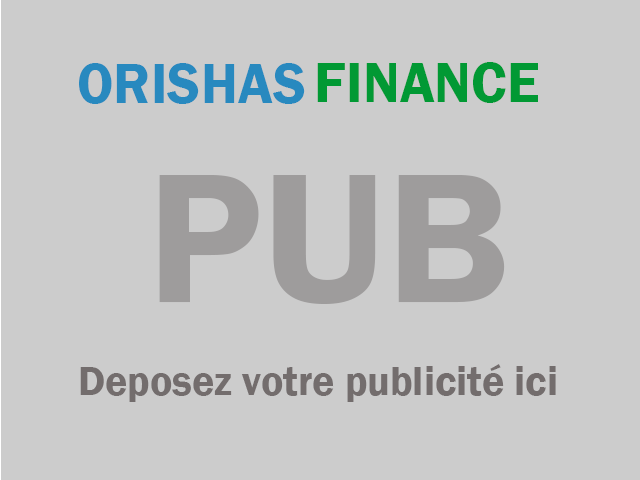 Les actualités de la BRVM en Flux RSS
Les actualités de la BRVM en Flux RSS
Nous agrégeons les sources d’informations financières spécifiques Régionales et Internationales. Info Générale, Economique, Marchés Forex-Comodities- Actions-Obligataires-Taux, Vieille règlementaire etc.
Profitez d'une expérience simplifiée
Retrouvez toute l'information économique et financière sur notre application Orishas Direct à Télécharger sur Play Store
RÉCIT - Pénalisée par la pandémie, la demande de brut progressera moins que prévu et atteindra son pic avant 2030.
2020, annus horribilis pour l’économie mondiale et pour le pétrole. Le baril de brent a perdu les trois quarts de sa valeur entre janvier et avril, chutant de 69 à 18 dollars avant de remonter ces derniers jours au-dessus de 50 dollars. La mise en quarantaine du Royaume-Uni à cause d’ une nouvelle variante du virus a toutefois fait dévisser les cours, lundi, qui perdaient à la mi-journée, plus de 5 %, à 49,50 dollars.
» LIRE AUSSI - Coronavirus: les reconfinements pèsent sur le pétrole
Pendant le premier confinement, fin avril, la référence américaine, le WTI, a carrément plongé en territoire négatif, à près de - 38 dollars le baril . La pandémie de Covid-19 est bien entendu à l’origine de ces secousses. Les mesures de confinement et la paralysie mondiale de l’économie, avec un arrêt quasi total des transports et de l’industrie, ont engendré une récession et un recul inédit de la demande d’or noir. Fin 2019, il était prévu que la consommation globale de brut passe de 100 millions de barils par jour (mbj) à 101,5 millions en 2020. Au final, la demande a reculé cette année à environ 92 millions de barils par jour, estime l’Agence internationale de l’énergie (AIE).
Entre une guerre des prix féroce, des paris sur la capacité de stockage du brut et des faillites en série chez les producteurs de pétrole de schiste américains, les rebondissements ont été nombreux. Début mars, l’Arabie saoudite, premier exportateur mondial , dépitée de n’avoir pas convaincu ses alliés, en particulier la Russie, de réduire la production afin de limiter la baisse des cours, a pris le parti de faire exploser ses exportations en ouvrant ses vannes et en cassant les prix.
Essor des renouvelables
De quoi mettre à mal l’ennemi, à savoir les producteurs américains de pétrole de schiste, aux coûts de production plus élevés. Et aussi d’inquiéter l’allié russe. Le pari du royaume wahhabite était «très risqué, il a nécessité des nerfs d’acier. Mais il a été efficace. Le 12 avril, Moscou s’est rallié à la stratégie saoudite, en acceptant des mesures drastiques, plus sévères que celles envisagées un mois avant, soit des réductions de production de 9,7 mbj en mai et juin», détaille Francis Perrin, directeur de recherche à l’Iris. «Le cartel de l’Opep+, en particulier ses deux acteurs dominants, l’Arabie saoudite et la Russie, a montré sa volonté de maîtriser ses parts de marché et d’éliminer des concurrents potentiels», complète Antoine Rostand, président de la société spécialisée Kayrros.
» LIRE AUSSI - La consommation de pétrole a-t-elle entamé son déclin irrémédiable?
Entre-temps, l’écart entre la faiblesse de la consommation et l’abondance de la production avait saturé les capacités de stockage mondiales. Le 20 avril, les contrats à terme de WTI cotés à New York sont devenus négatifs pendant deux jours, faute de réservoirs disponibles à Cushing, la petite cité de l’Oklahoma où sont stockés les barils qui servent de référence à ces contrats. Et, partout dans le monde, quantité de tankers se sont transformés en réservoirs flottants, alimentant la surenchère sur les prix de location de ces bateaux, qui ont flambé de 10.000 à 150.000 dollars par jour.
Recul de la demande
Depuis novembre, porté par les espoirs de vaccins contre le Covid-19 et la reprise en Asie, le cours du brut remonte. En 2021, le FMI table sur une croissance mondiale de 5,2 %, après un recul de 4,4 % cette année. Mais le rebond de la demande ne dépassera pas 5,7 mbj l’an prochain, prévoit l’AIE. Le nouveau coronavirus a grippé le circuit pétrolier. Contrairement à l’or noir, les énergies renouvelables ont été portées par la pandémie. «Nous reviendrons à une économie différente», avertissait mi-novembre Jerome Powell, président de la Fed, la banque centrale américaine. Un tiers de la baisse de consommation de brut proviendra des changements de comportement, avec notamment la hausse du télétravail et la diminution des transports, prévoit le groupe pétrolier BP. Le Covid-19 a accéléré la transformation en cours dans l’utilisation de l’énergie. L’automobile, secteur le plus consommateur de pétrole, retrouvera son niveau d’avant-crise, mais il ne le dépassera probablement jamais, affaibli par la montée en puissance des voitures électriques, pronostique l’AIE. L’aérien, où la fréquentation a plongé de 90 % en avril et la consommation de brut de 40 % sur l’ensemble de l’année, ne devrait revenir à son niveau précédent qu’en 2024.
À long terme, les perspectives du secteur pétrolier ne sont pas meilleures. Alors qu’il y a un an, l’AIE et l’Opep tablaient sur une consommation de 106 à 110 mbj à l’horizon 2040, l’AIE estime désormais que la demande ne dépassera jamais 104 mbj. De son côté, BP pronostique un pic de consommation de l’or noir qui aurait lieu au plus tard en 2030 et serait suivi d’un recul de la demande atteignant, selon les scénarios, 8 % à 45 % à l’horizon 2050.
Vous devez être membre pour ajouter un commentaire.
Vous êtes déjà membre ?
Connectez-vous
Pas encore membre ?
Devenez membre gratuitement
19/12/2025 - Taux
04/12/2025 - Taux
19/11/2025 - Secteurs Taux
06/10/2025 - Taux
19/09/2025 - Taux
28/08/2025 - Taux
13/08/2025 - Taux
22/07/2025 - Taux

19/12/2025 - Taux

04/12/2025 - Taux

19/11/2025 - Secteurs Taux
